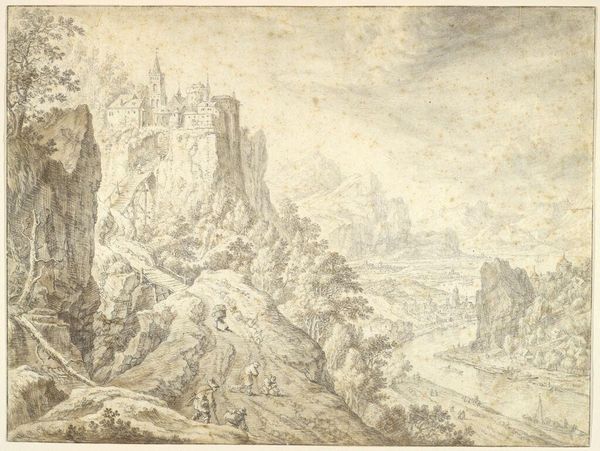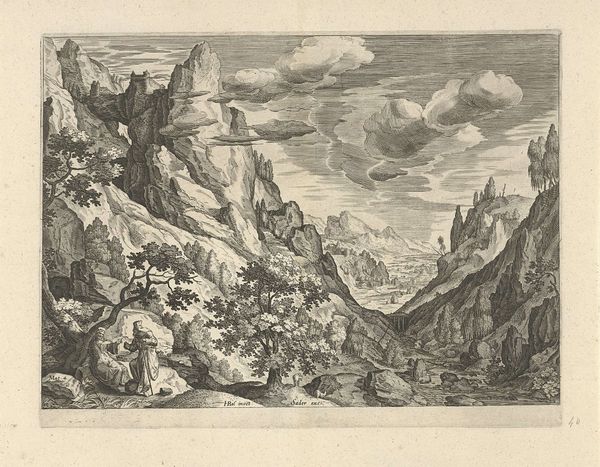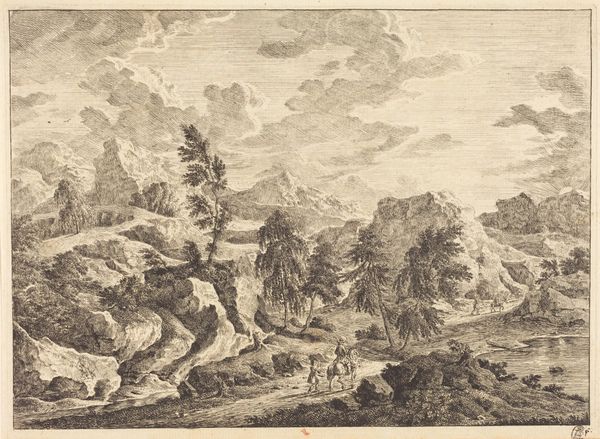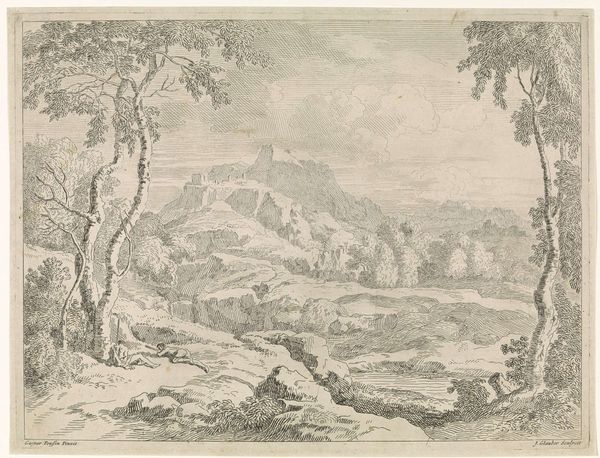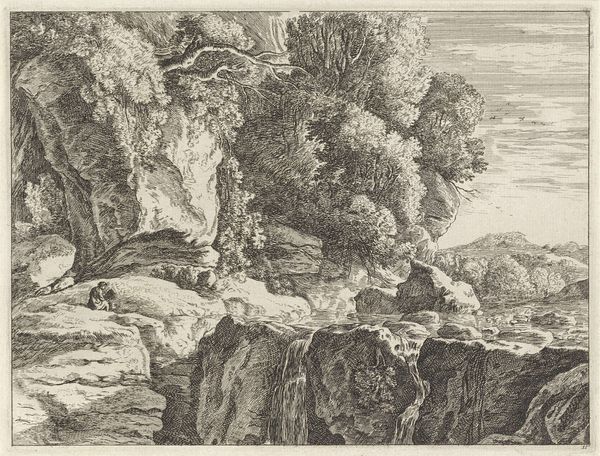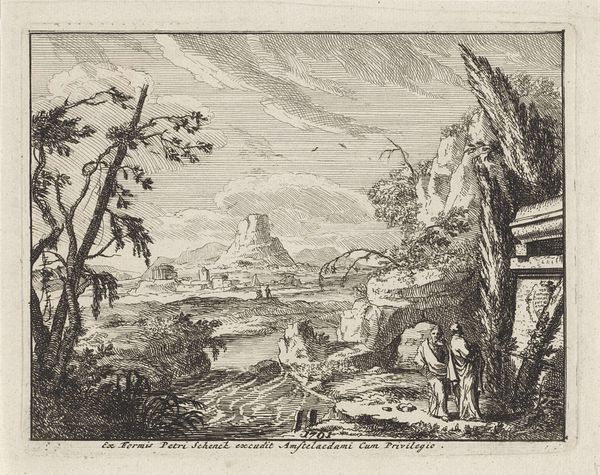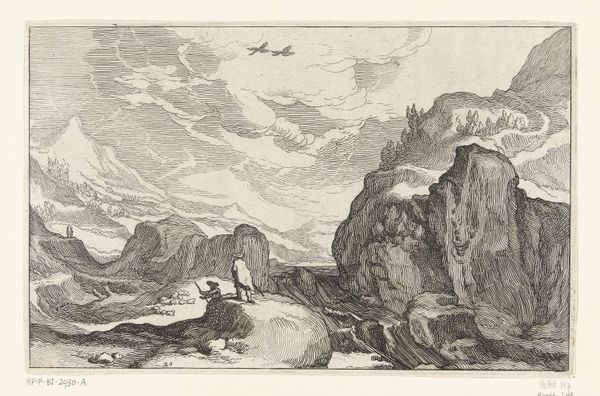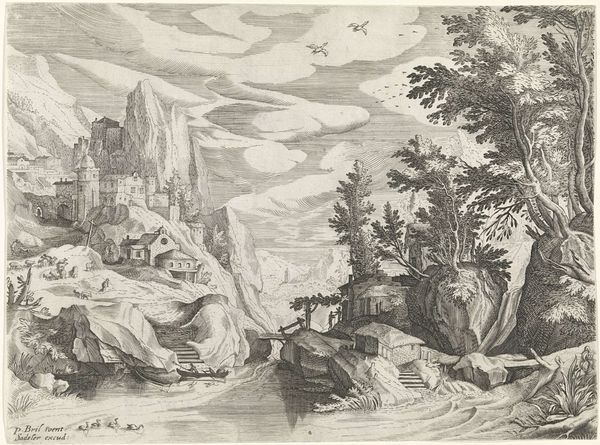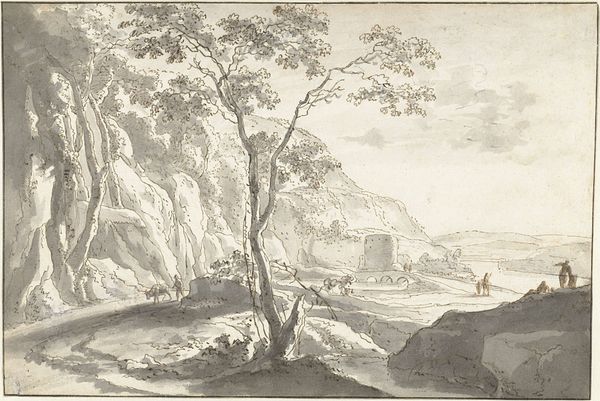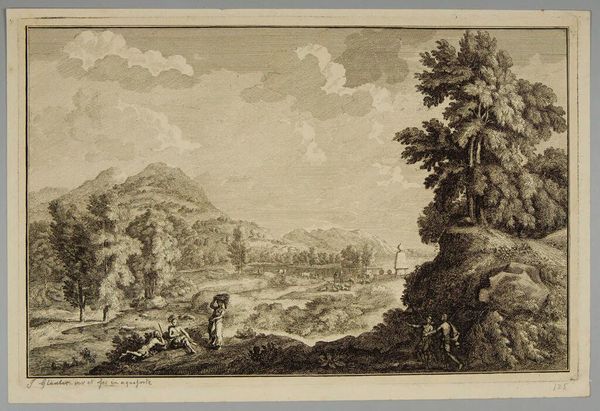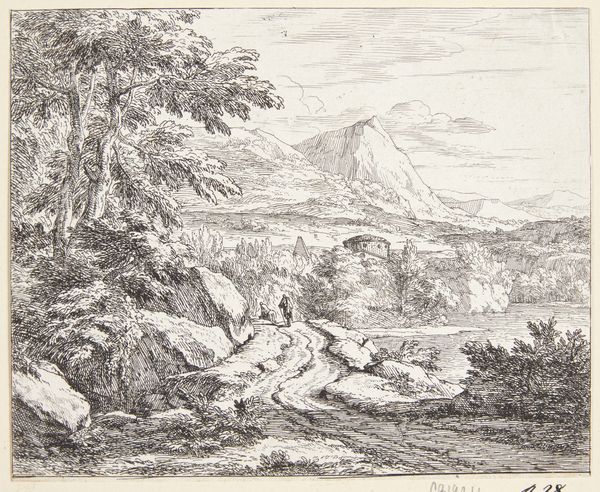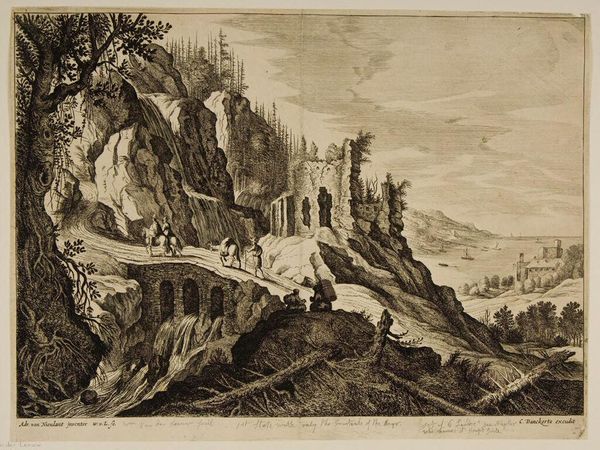
drawing, tempera, ink, pencil
#
drawing
#
tempera
#
pencil sketch
#
landscape
#
perspective
#
ink
#
pencil
#
line
#
cityscape
#
northern-renaissance
#
watercolor
#
realism
Dimensions: height 186 mm, width 299 mm
Copyright: Rijks Museum: Open Domain
Editor: Imaginary Mountain Landscape, created around 1652 using ink, pencil, tempera, and wash, feels…almost like a stage set. It's so carefully constructed, yet fantastical. How do you interpret this work? Curator: That sense of artifice is key. While titled as a 'landscape', it reflects more on the 17th century's appetite for curated views. Jan van Aken, here, isn’t depicting an actual place but rather performing an idealised scene. How might that artificiality be related to broader cultural trends? Editor: Well, landscape paintings became more popular during this era, perhaps mirroring increased urbanization. People missed nature. Was it also tied to social status to display such views? Curator: Precisely! These constructed landscapes became signifiers of taste and education for the rising merchant class. Displaying idealized, often foreign, views announced a worldly perspective and economic success. Notice the figures dotted throughout. What's their significance in this “landscape”? Editor: They look quite small compared to the vast landscape. Like they're part of a controlled environment? To admire its grand scale? Curator: They highlight both the human mastery over nature and the sublime power of nature itself – concepts heavily debated at the time. Artists, through works like this, participated in shaping those discussions. They created visual arguments, not mere depictions. So, how does understanding that reframes your initial 'stage set' idea? Editor: I see what you mean; the artist uses perspective and these figures as a way to promote those concepts. It's like Aken’s orchestrating not just the landscape, but the viewer's reaction too! Curator: Exactly. These "imaginary" landscapes reflected and reinforced the era's socio-political and cultural landscape itself. Editor: That gives me so much to think about, especially in relation to art’s broader role within society during that period.
Comments
No comments
Be the first to comment and join the conversation on the ultimate creative platform.
